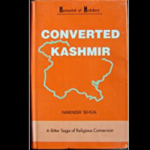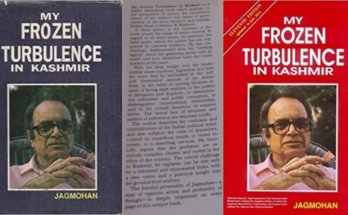Horrors Of
Noakhali Massacre Of October, 1946
By: V.S. Godbole
150,000 unarmed Hindu men women and children were massacred by fully armed Mohammedans in Chittagong and Noakhali (now in Bangladesh) in October, 1946. After reading the news, Mr. Vishnupant Karkare of Nagar, Maharashtra decided to travel to Noakhali to bring help to the victims of the atrocities. He was joined by 11 other volunteers (6 from Maharashtra, 1 from Punjab and 4 from Bengal). On his return he published a booklet in December 1946. Here is a summary of his eye-witness account.
* I traveled from Nagar to Nagpur, then to Raipur, addressed a meeting of 7,000 in Raipur, got extracts from Savarkar’s drama Sanyast Khadga (Abandoned Sword) printed in Hindi as a message for Bengali Hindus.
* I traveled from Nagpur to Calcutta. I soon realized how the Muslim League government was harassing those Hindus who were trying to help those affected by Moslem riots. Such helpers were not even released on bail! I attended the relief center at Budge Budge – a suburb of Calcutta. The refugees were grateful to receive clothing from Maharashtra. I met an old Brahmin priest from Noakhali. Eight members of his family were killed by Moham-medans. Only his mother and the two children of his brother survived.
* The game of badminton was popular in Calcutta at the time. Despite the news of Noakhali there was no suspension of badminton playing. I visited two/three clubs and discussed the Noakhali riots with the members. They said: “Oh well, the British rulers are behind these riots. There is not much we can do.” Despite having witnessed Moslem riots in Calcutta itself just three months earlier, they were quite unconcerned about the fate of the Hindus of Noakhali.
* I was shocked by the reception given to us by Dr. Shyamaprasad Mookerjee. Even after learning that Karkare and the others had come all the way from Maharashtra, hundreds of miles away to help, he said: “Have you come to see a cinema? Do you want to write a story? and so on.” After calming down, he said: “What we need are fearless volunteers who would go to riot affected areas. I welcome persons like you. The irony is that it is the Hindu Mahasabha which is offering all the help, but if elections were held today, the same people would vote for the Congress party!”
* With my group I went to the Sealdah station to catch the Chittagong Mail to Noakhali. At the station, I saw hundreds of Moslem guards (of Jinnah). But there were also Hindu relief centers flying the Bhagwa Dhwaj and working fearlessly alongside. There were centers run by Veer Abhimanyu Sangh, Bharat Seva Sangh, National Youth Center, Marwari Hindu Society and the Arya Samaj. The Congress Party ran no such relief centers.
* Ours was the first batch of volunteers to go to the help of the Hindus at Noakhali. The Mohammedans were surprised to see Hindu Mahasabha flags and the slogans of Hindutva. The last railway station was Goalundo. We traveled to Chandpur by boat. The first batch of volunteers sent by the Hindu Mahasabha included an editor of a Daily Newspaper of Calcutta. He had noted:
“Many people flocked to Chandpur after the Moslem inspired riots in Noakhali. They were stranded, some four days waiting for a boat to Calcutta. Boats had a limited capacity. The people were starving. Hindus of Chandpur tried to give them food, but the Muslim League government threatened them by saying: “If you give them food it will mean that you have plenty of food and you will lose your ration cards.” Many refugees had no change of clothing. The only clothes were those that they had on their persons when they fled.
“I was astonished to see the barbarity of Moslems even in Chandpur. They distributed poisoned bananas (called chavai) to hungry refugees who ate them eagerly. The poison had the effect of increasing body heat, caused a burning sensation. Many died this way; there were many children among the dead.
“Some 7,000 refugees starved to death at Faridganj. I saw Hindu shops and properties looted and burnt. Moslems threatened that anyone giving medical help to the Hindus will be killed.”
Karkare continues:
* At Chandpur, we distributed whatever clothes we had with us. We translated important parts of Veer Savarkar’s play Sanyasta Khadga, from Marathi to Bengali and distributed thousands of copies to Hindus. However, people had been so brainwashed by the preaching of non-violence for the last 25 years that they just could not believe that Hindus could resist aggression.
* After Chandpur, we visited Daulatganj, Vipula, Sonaimuro and other villages. Not one Hindu was alive in those places. At Sonaimuro, all Hindus who had refused to embrace Islam were killed and buried. Mohammedans proudly opened up the ditches and showed us the recently buried dead bodies. They said: “This is how we will take Pakistan.”
* We traveled to Chaumuhanis and Lakhipur – where the atrocities surpassed those of Chengiz Khan and Aurangzeb. 25 Hindu virgins were stripped naked and paraded in town. They were subjected to indescribable violations. One and a half mile away there is a village called Dalal Bazar. One famous Hindu Roy family lived there. He had at least 80 kilos of gold and diamonds and valuables worth millions. It is incredible that although he had 7 licensed guns in his house, he fled without firing a single shot and left his women and children in the hands of the Mohammedan hoodlums.
* I visited the following villages around Laxmapuri – Nandigram, Hajiganj, Shreepur, Badalpur, Dattapara, Khilpada, Paikpada, Ratanpur, Raipur, Panchamgwada, Langchar, Korpara, Gayagram, Sapalipara, Silchur, Bamani, Karava, Mashinpur, Chandpur, Dharmapur, Vasantpur, Bhavanipur, Samcharbad, Daxnahamchandi, Ababil, Rampur and Shreeramganj.
The fantasy of economic fight:
* I must emphatically state that the riots and the massacre of Hindus had no economic basis. It was purely and simply an attack on Hindus by the Mohammedans. The affected Hindus came from all backgrounds; there were congressites, socialists, communists, followers of the Hindu Mahasabha; rich and poor; educated as well as illiterate. The attackers were all Moslems of all kinds: ex-MLAs like Golam Sarwar, government officers of all ranks and laborers. They were united solely by the hatred for Hindus.
Some inspiring incidents:
* Paniala is a small village in Ramganj thana. One Priya Lal was a simple middle class man. His wife was beautiful. A Mohammedan hoodlum demanded that he should give away his wife to him. Priya Lal was enraged. He snatched the sword of the hoodlum and killed him. A fight ensued. As Priya Lal was outnumbered, his wife pleaded with him to kill her first to save her from dishonor. Priya Lal did that and later killed himself.
* Pachgaria is another village nearby. Babu Upendra Kumar Roy was a wellknown Hindu. He was not a follower of the Hindu Mahasabha. He was told to embrace Islam and let his beautiful niece Arati Devi marry a Mohammedan youth. If they had fled, all the Hindus of the entire village would be killed. He tried to buy off the Mohammedan hoodlums. They accepted the money but still inisted on their demands. All the members of the family decided to commit suicide. Moslems intervened. Arati was forcibly married to the Mohammedan youth in the presence of police superintendent Abdullah. The District Officer Macmillan was stunned by the affair. He intervened and saved the lady and her family from dishonor.
* Veer Rajendra Lal Roy Chowdhari:
Korpara, Post Ramganj, District Noakhali. Chowdhari was Chairman of the Bar Association. After the massacre of Hindus in Calcutta (August 16, 1946) it was only a matter of time when similar calamity would befall Noakhali where Hindus were only 12% of the population. On Sept. 9, 1946, Mohammedans under Golam Sarwar came barging in Korpara. Chowdhari’s Mohammedan servants asked him to run away to a place of safety. He refused. Next day, the Moslems attacked his house. Rajendra Lal and Swami Tryambakanand bluntly said: “We will fight to the finish.” Chowdhari used his gun. The Swami escaped with his wife, led her to the safety of Ramganj police station and sent telegrams to the Viceroy and important officials. 11 members of the Chowdhari family died fighting. 9-year-old Dilipkumar was saved by servant Yashoda Day. All the family members died fighting or were burnt to death. They did not surrender.
* Shayestanagar:
Chittaranjan Das Gupta. He removed his wife and children to a place of safety. But his mother refused to escape. Gupta fought with Mohammedan attackers, killed 168 Moslems with his rifle. When only two bullets were left, he shot his mother Durgadevi and then shot himself to death.
THERE ARE MANY SUCH EXAMPLES OF HINDU HEROISM. WE SHOULD ALWAYS REMEMBER THEM.
* Example of a courgeous Hindu woman:
In Lengchar, a Hindu woman was kidnapped by seven Mohammedan thugs. They used to lock her up in a house and rape her at night. Somehow our message of resistance to aggression reached her. She made a cunning plan. One night she prepared a nice meal for all the thugs. When they were fast asleep, she set the house on fire. She stood by at the door and did not let any one escape. Her message was clear; “if you dare kidnap a Hindu woman, you will have to pay for it with your life.” It was understood by the Mohammedans, at least in this instance. It was such heroic deeds and Hindu reprisals in Bihar that stopped Moslem fanticism, not Gandhi’s non-violence.
……………………………………..
Acharya Kripalani – President of the Congress Party, after his tour of Noakhali wrote:
“A MESSAGE TO BENGAL”
I am clearly of the opinion that whatever the Government, Provincial or Central, may or may not do, every Bengalee, male or female, has to defend himself or herself by whatever means he or she can think of. In this connection, I could keep before every Bengalee the example of Shri Rajendra Lal Roy and his family who defied a mob for full two days and fell fighting. Even as a believer in the absolute non-violence, I hold that the resistance offered by Shri Rajendra Lal Roy and his family, was the nearest approach to non-violence.
……………………………………..


